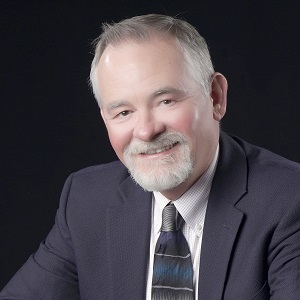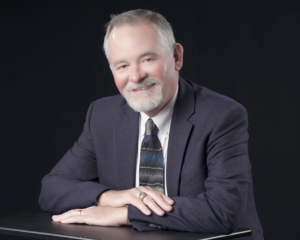The Hidden Value of Employee Recognition
The Hidden Value of Employee Recognition
Guest writer Kurt Pease tackles employee turnover in this week’s blog post, “The Hidden Value of Employee Recognition: Why a Paycheck Isn’t Enough.”
High employee turnover is a major pain point for businesses. We often assume money is the main reason people leave, but a recent Gallup poll shows job dissatisfaction hitting record highs. The truth is employees crave more than just a paycheck. They want to feel valued and see how their work contributes to the bigger picture.
This was certainly true at 4Rivers Equipment, where I recently retired. We considered ourselves a great place to work, but higher employee turnover told a changing story. Exit interviews revealed a disconnect between our perception and employee needs. The younger generation wanted to feel their work mattered. The CEO at 4Rivers knew we must act quickly and asked his leadership team for ideas.
Recognition: The Missing Piece of the Puzzle
Thinking back to my experience at John Deere, I remembered their successful employee recognition program, “John Deere Rewards.” It fostered a sense of connection and appreciation. We reached out to Greg Mazucco and Cori Karger from Augeo Marketing to help build a similar program that they developed at John Deere. Greg and Cori outlined how to build a successful workplace engagement program:
Building a Recognition Program that Works
Here’s what we learned about creating an effective program from Greg and Cori:
- Clear Goals: Recognition shouldn’t be random. Define your program’s mission and align it with business objectives.
- Leadership Buy-in: Senior leadership needs to be actively involved. Recognition becomes a top-down and bottom-up effort.
- Launch with Impact: Don’t bury the program launch in a memo. Make it a company-wide event to generate excitement.
- Sustained Focus: Recognition shouldn’t be a one-time thing. Regular appreciation is key.
- Meaningful Budget: Allocate a dedicated budget for rewards. Even non-monetary rewards should have value.
- Defined Recognition Tiers: Establish guidelines for different levels of recognition with clear criteria.
- Visibility Matters: Public recognition walls can be a great motivator. Offer options for private recognition as well.
- Peer-to-Peer Recognition: Encourage recognition across all levels, not just managers.
- User-Friendly Platform: Make participation easy and accessible. Consider a user-friendly online platform like social media.
- Onboarding Integration: Introduce the program during onboarding to set expectations and highlight company culture.
- Values Alignment: Clearly connect your company values to recognition programs, showcasing how employee contributions support those values.
- Data-Driven Improvement: Track recognition metrics and use the data to identify areas for improvement and correlate recognition with employee satisfaction and retention.
Dealership Implementation
I was fortunate in my career to not only work at John Deere and 4Rivers Equipment but developed relationships across the dealer network. Five Star Equipment was an important dealer to me and partnered with Greg and Cori to implement an employee recognition program, and the results speak for themselves. I spoke with key leadership personnel from both dealerships to gain insights into their programs’ success.
They are:
- Hannah Ross – Vice President of Marketing 21st Century & 4Rivers Equipment
- Lori Snider – Director of Human Resources – 4Rivers Equipment
- Elena Seidita – Director of Human Resources – Five Star Equipment
- Tim Stevens, Recruiting and Training Manager – Five Star Equipment
Why Recognition?
Both dealerships identified a need to address employee engagement, particularly among younger generations, 4Rivers & Five Star highlighted the desire for employees to understand how their work contributes to the “bigger picture.” Rising employee turnover prompted them to seek solutions.
Program Highlights
- Early Integration: Both dealerships introduced the programs during onboarding. 4Rivers named their program “Peak Performance,” emphasizing achievement from the start.
- Breaking Down Barriers: The programs eliminated departmental silos. The dealers emphasized how exempt employees can now recognize non-exempt colleagues across departments, fostering a more collaborative environment.
- Expanding Recognition: The programs go beyond just rewarding outstanding work. Five Star now recognizes safety achievements, birthdays, anniversaries, and veterans.
- Core Values Integration: Both dealerships tied recognition to their core values. 4Rivers utilizes “challenge coins” to acknowledge employees who exemplify these values. Five Star emphasized the importance of employees seeing the connection between their work and the dealership’s core principles.
- Engagement & Retention 4Rivers stressed the link between manager engagement and employee recognition. By acknowledging good behavior and creating context for performance, employees are more likely to go above and beyond. Both dealerships reported significant reductions in employee turnover.
Areas for Improvement
- Accessibility: Five Star acknowledged the need for ongoing education, particularly for technicians who may not have daily access to the web-based portal.
- Manager Participation: 4Rivers mentioned that some managers are more active users of the program than others. Utilizing engagement metrics allows them to identify areas with low participation and potentially higher turnover.
The Takeaway
4Rivers Equipment and Five Star Equipment demonstrate the power of well-designed employee recognition programs. By fostering a culture of appreciation, breaking down barriers, and aligning recognition with core values, these dealerships have seen a significant decrease in employee turnover. In the competitive world of equipment dealerships, investing in employee recognition can be a game-changer.


